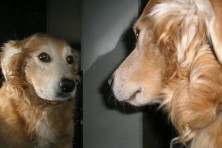Humans Apparently Did Fall Off a Turnip Truck
- Share
- Tweet
- Pin
- Share
• Dedicated climate scientists are working diligently to find out what is happening to our climate – and our planet. Angela Marinoni is a researcher at the Institute of Atmospheric Sciences and Climate in Bologna, Italy. Since 2006, she and her colleagues have been gathering data at what they thought was a “pristine” site in the Himalayas. It takes six arduous days of hiking up the Khumbu Valley of Nepal to reach their research station, located at an altitude of more than 16,000 feet. Some of their measurements focus on the reflectivity of light off nearby glaciers. They discovered that coatings of soot and dust on the snow pack are accelerating melting of the glaciers and may even affect monsoon patterns. During the dry season glacier reflectivity may be reduced by as much as five percent, which means that soot, called black carbon, is absorbing light energy and its heat is enhancing glacial melt. Marinoni is often exhausted after a grueling climb, but she does not slow down when she arrives at the top; she has data to collect. She is just one example of many dedicated climate scientists who are seeking non-biased answers to questions about global warming. (Science, Mar. 1, 2013)
• Most genes in humans are shared with dogs, and their cancers are practically the same as well. “You couldn’t tell a difference between a dog tumor and human tumor under the microscope,” said Peter Dickinson, a veterinary neurosurgeon. The most common type of cancer is non-Hodgkin’s lymphoma, which affects dogs and humans in about equal proportion, and the same chemotherapy treats both. Cancer risk is about the same in dogs as in people, and more veterinarians are using human drug therapies to treat canine cancers. About 25 percent of dogs will eventually develop a malignancy. Some breeds have a very high cancer death rate. About half of all golden retrievers die from cancer, chiefly lymphoma, and brain tumors often occur in dogs with squished-looking faces like pugs and bulldogs. But many dogs with cancer are now responding to treatment with “people drugs,” and in return, studies of their cancers are providing new opportunities for cancer researchers to learn about the progression of human malignancies. (Science News, Mar. 9, 2013)
• The human-dog relationship dates back about 10,000 years, when it is thought that Asian wolves began to learn that hanging around Paleo-Indian campsites provided a source of food. In turn, ancient Indians depended on the campsite wolves to sound an alarm if danger approached. Dogs communicate with one another mainly through the sense of smell. The dog’s olfactory epithelium on the roof of the nasal chamber contains about a million times more olfactory receptors than a human. Dogs also communicate through body position, movement, sounds and facial expressions. One cue we instantly recognize is tail wagging. Of the four types of wags (aggressive, submissive, etc.) the one that we most appreciate is the one that signals happiness. Most dog owners feel pride in sharing genes with their pets. This knowledge is tempered by the fact that we share about 40 to 50 percent of our genes with turnips. (czs.org [Brookfield Zoo]; macalester.edu; other sources)



